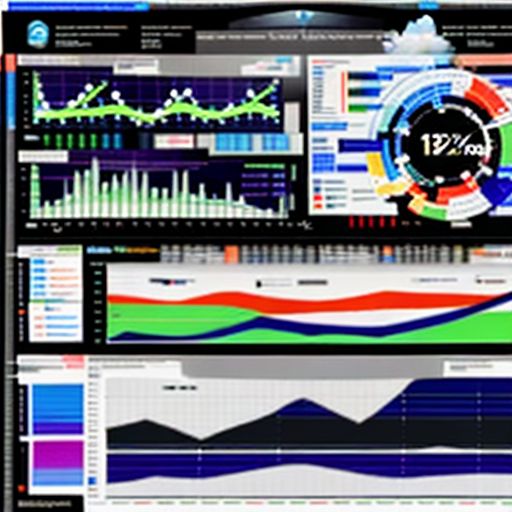
Imagine accessing all your digital resources – applications, data, and computing power – without the limitations of physical hardware. That’s the power of cloud computing. This comprehensive guide dives deep into the world of cloud computing services, exploring their types, benefits, and answering your most pressing questions.
What are Cloud Computing Services?
At its core, cloud computing delivers on-demand computing services – from servers and storage to databases and software – over the internet. Instead of owning and maintaining physical data centers, businesses and individuals can “rent” these resources from cloud providers like Amazon Web Services (AWS), Microsoft Azure, and Google Cloud Platform (GCP).
Think of it like this: instead of owning a power plant, you’re buying electricity from a utility company. You only pay for what you use, scaling resources up or down as needed.
Why is Cloud Computing Important?
The impact of cloud computing on businesses and individuals alike is undeniable. Here’s why it’s revolutionizing the digital landscape:
1. Cost-Effectiveness: Cloud computing eliminates the upfront costs of hardware, software, and IT infrastructure.
2. Scalability and Flexibility: Easily scale resources up or down based on demand, ensuring you pay only for what you use.
3. Enhanced Security: Cloud providers offer robust security measures, often surpassing what individual businesses can implement.
4. Increased Collaboration and Productivity: Cloud-based applications enable real-time collaboration, regardless of location.
5. Business Continuity and Disaster Recovery: Data backups and disaster recovery solutions ensure business continuity in unforeseen events.
Exploring the Types of Cloud Computing Services
Cloud computing services are broadly categorized into three main types:
1. Infrastructure as a Service (IaaS)
IaaS provides the foundational building blocks of IT infrastructure – virtual servers, storage, networks, and operating systems – over the internet.
Benefits of IaaS:
- Complete Control: Provides the highest level of control over your IT resources.
- Cost-Effective: Pay only for the resources you consume.
- Highly Scalable: Easily adjust resources based on your changing needs.
Examples of IaaS Providers: AWS (EC2), Microsoft Azure (Virtual Machines), Google Cloud Platform (Compute Engine)
2. Platform as a Service (PaaS)
PaaS offers a complete development and deployment environment in the cloud, enabling developers to build, test, and run applications without managing the underlying infrastructure.
Benefits of PaaS:
- Simplified Development: Focus on application development without infrastructure management concerns.
- Faster Time to Market: Streamlined development and deployment processes.
- Cost-Effective for Development: Pay only for the resources used during development and deployment.
Examples of PaaS Providers: AWS (Elastic Beanstalk), Microsoft Azure (App Service), Google Cloud Platform (App Engine)
3. Software as a Service (SaaS)
SaaS delivers software applications over the internet, typically on a subscription basis. Users access applications through web browsers or dedicated apps, eliminating the need for installation or maintenance.
Benefits of SaaS:
- Easy to Use and Access: Accessible from anywhere with an internet connection.
- Automatic Updates: No need for manual software updates or patches.
- Cost-Effective for Users: Predictable subscription-based pricing.
Examples of SaaS Providers: Salesforce, Microsoft Office 365, Google Workspace
 Cloud Computing Services Diagram
Cloud Computing Services Diagram
Frequently Asked Questions about Cloud Computing Services
Here are answers to some common questions about cloud computing:
-
Is cloud computing secure? Cloud security is a shared responsibility. While providers implement robust security measures, users also play a crucial role in data protection.
-
What happens to my data if I switch cloud providers? Cloud providers offer data migration tools to facilitate the transfer of your data to another provider or back to on-premises systems.
-
What is the difference between public, private, and hybrid clouds?
- Public Cloud: Resources are shared by multiple organizations on the provider’s infrastructure.
- Private Cloud: Dedicated resources for a single organization, offering greater control and security.
- Hybrid Cloud: Combines public and private cloud environments, allowing for flexibility and workload optimization.
Conclusion
Cloud computing services have transformed how we store data, access applications, and manage IT infrastructure. By understanding the different types of cloud services, businesses and individuals can leverage the power of the cloud to achieve greater efficiency, scalability, and cost savings. As technology evolves, the cloud will continue to play a pivotal role in shaping the future of computing.
We encourage you to share your thoughts and experiences with cloud computing in the comments below. Have you made the transition to the cloud? What benefits or challenges have you encountered? Let’s start a conversation!


